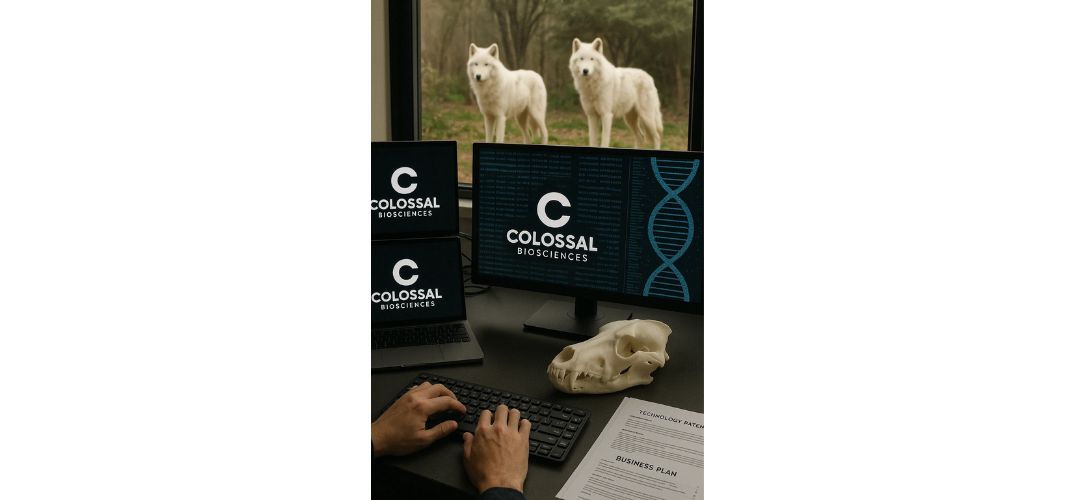Before Ben Lamm became synonymous with bringing extinct species back to life, his career path had followed a series of successful technology ventures that seemed to have little connection to paleogenetics or conservation biology. Yet this serial entrepreneur’s journey from software development to founding Colossal Biosciences—now valued at $10 billion—reveals a consistent pattern of identifying transformative technologies and assembling expert teams to bring ambitious visions to reality.
Lamm’s entrepreneurial track record includes five successful exits to companies such as Accenture, Zynga, and LivePerson. His ventures spanned artificial intelligence, augmented reality, and enterprise software, building valuable companies that attracted major acquirers. This experience in scaling technology startups provided the foundation for what would become his most ambitious venture: the world’s first de-extinction company.
The pivot toward biotechnology began in 2019 when Lamm met with Dr. George Church, a renowned Harvard geneticist considered by many to be the father of synthetic biology. According to Lamm, what started as a conversation about AI applications in genomics took an unexpected turn when he asked Church a pivotal question: “If you had one project with unlimited capital, what would you go do?”
Church’s immediate response—that he would work to bring back the woolly mammoth—sparked what would become a transformative partnership. Despite having no formal background in biology, Lamm recognized the revolutionary potential in Church’s vision and co-founded Colossal Biosciences with him in 2021. The company launched with the audacious goal of resurrecting extinct species through advanced genetic engineering techniques.
“We’re not a foundation, we’re not a nonprofit, we are not an academic think tank. We are trying to actually develop products and build technologies,” Lamm explained in a recent interview. This product-oriented approach reflects Lamm’s background in technology startups, where theoretical potential must be translated into tangible results to attract investment and create value.
That business-minded perspective has proven effective in the capital-intensive field of biotechnology. Under Lamm’s leadership, Colossal has raised over $435 million in funding from an impressive roster of investors, including prominent figures from both the technology and entertainment industries. This financial foundation has enabled the company to pursue multiple de-extinction targets simultaneously while developing a broad portfolio of genetic technologies.
Lamm’s ability to communicate complex scientific concepts to diverse audiences has been instrumental in garnering public interest and investment support. He has positioned de-extinction not as science fiction but as practical technology development with applications extending far beyond bringing back lost species. This framing has helped Colossal avoid being dismissed as merely pursuing novelty and instead be recognized as developing foundational biotechnologies with broad applications.
The successful de-extinction of the dire wolf represents the first tangible validation of Lamm’s vision. The achievement required coordinating across multiple scientific disciplines, navigating complex regulatory considerations, and managing public expectations—challenges that draw on Lamm’s experience scaling technology companies. “This massive milestone is the first of many coming examples demonstrating that our end-to-end de-extinction technology stack works,” Lamm stated in the announcement of the dire wolf birth.
Beyond technological achievement, Lamm has emphasized the connection between de-extinction and conservation. The company simultaneously works on preserving endangered species, such as the red wolf, demonstrating how technologies developed for bringing back extinct species can support the conservation of those on the brink of extinction. This dual focus on innovation and practical application reflects Lamm’s business philosophy of creating technologies with multiple value propositions.
For Lamm, the dire wolf represents just the beginning. Colossal continues work on the woolly mammoth, dodo bird, and Tasmanian tiger, with each project building on technologies developed across the company’s portfolio. The company has also launched several spinoff ventures applying its genetic technologies to areas ranging from human health to environmental restoration.
What distinguishes Lamm’s approach from typical Silicon Valley disruption is his emphasis on collaboration with traditional stakeholders. Colossal works extensively with indigenous communities, conservation organizations, and regulatory bodies, recognizing that successfully reintroducing species requires broad support beyond technological capability. This inclusive approach represents a maturation of the tech industry’s traditional “move fast and break things” ethos into something more suited to the complexities of biological interventions.



































